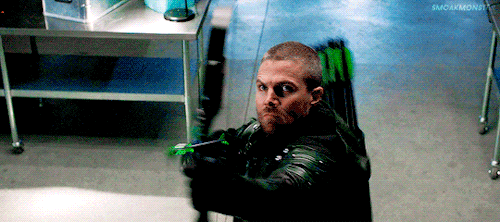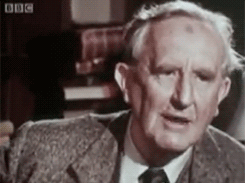
Source: Amazon
The Woman In Cabin 10 is a 2016 thriller written by
Ruth Ware. It was published by Scout Press, a division Simon & Schuster.
The novel was a New York Times Bestseller and was named one of the best
mystery books of 2016 by The Washington Post.
The premise of the novel is as follows. Lo Blacklock, a
journalist for a travel magazine, is given a long-awaited, potentially
life-changing assignment. A week on a small luxury cruise vessel through Norway.
At first, the trip seems like a dream come true, but as the week continues, Lo
witnesses something terrifying: a woman being thrown overboard. The only
problem is that all the passengers remain accounted for, and the ship continues
on its journey as if nothing happened. Lo then tries desperately to convince
someone, anyone, that something is amiss.
The story starts off slow at first. The book opens with Lo
being the victim of a burglary, and around thirty pages are dedicated to her
having that experience, getting her locks changed, replacing a few of the
stolen items and feeling traumatized about a man breaking into her house. Since
the robbery winds up being significant later, I understand having that be the
opening of the story. However, I personally felt like the sections about her
buying a new phone and getting her locks fixed weren’t needed. Those details
had no real significance to the plot and felt like unneeded filler.
Eventually, though, Lo goes off on her cruise where the main
plot begins. A successful businessman married to a wealthy philanthropist has
decided to start his own, exclusive luxury cruiseline to see the Northern
Lights. She, along with other journalists and a few investors, are invited on
the maiden voyage in a bid to earn good publicity and raise interest in the
experience. She has a brief, random encounter with the woman in the cabin next
to hers, number 10. She doesn’t see the woman at dinner later, and when she
hears a body being thrown overboard, assumes the worst. Soon after, she’s
informed that the cabin next to her was empty and no one, guest or staff, is
unaccounted for. The bulk of the novel consists of Lo trying to figure out what
happened and prove that the cabin was occupied and the woman did go missing to
anyone who’d listen.
The mystery did intrigue me at the beginning. Was the woman
a stowaway? Did Lo see what she thought she saw? Was this part of some
conspiracy? How could a body have been thrown overboard and no one be missing?
Those questions all occurred to me as I read. I became even more curious as,
bit by bit, all the evidence she has either goes missing or is destroyed. It
begins to look like this whole thing is a big cover-up.
My curiosity was diminished once lo really starts
investigating. Her “investigation” consists of talking to the staff, asking
them the same basic questions and receiving the same answers. For some reason,
she doesn’t think to talk to more than one or two other guests, and when she does
talk to them, she tries to be sneaky about it and ends up not asking anything
relevant or likely to get results. The whole investigation part is pretty
boring and repetitive. I still wanted to know what happened, but the story
dragged on during this part.
All of my suspense went away once she finds herself captive
and at the mercy of someone responsible for the mystery. I stopped being
anxious, and started getting confused. There was a death, but it wasn’t who she
thought. There isn’t one person acting alone on the ship. The death being
covered up really doesn’t need to be. The “bad guy’s” plan doesn’t really make
sense once its all explained. Once she works out what happened, the rest of the
novel consists of Lo trying to figure out a way to get away from her captor and
somehow reveal what really happened. Of course, those attempts are somewhat
thwarted by finding herself in an unfamiliar place and not knowing who can and
can’t be trusted.
I can’t really go any further in this review without
discussing Lo herself. Lo, or Laura, isn’t a likeable character. Even before
she stumbles upon this mystery, she’s rude to people she’s never met before,
even ruder to her own boyfriend and a little conceited. On top of that, she’s
somewhat of an unreliable narrator. She suffers from anxiety, due to the
burglary, and takes medication for another condition, Unfortunately, her mental
state makes her unreliable, and its even remarked on in the story that her
medication, combined with alcohol, could have side-effects, leading a character
to dismiss her. Her behavior is wildly erratic as well, since she goes from
being livid at her ex-boyfriend, who’s on the trip because the story needed
more drama I guess, to apologizing to him for reacting sensibly to something he
does to her.
To be honest, I found this book to be fairly average. It has
exciting moments, interspersed with stretches where it drags on. As stated earlier,
I found the emphasis on the burglary to be a bit excessive and unneeded. It
also irked me that the argument made, by a crew member, that everything was
fine and Lo hadn’t seen a murder, was that she was projecting about the
burglary. Later, he brought up that she was on medication and she maybe saw or
heard something that wasn’t there as a result of that. The trope of “Character
has mental illness, is therefore crazy and not to be believed by other
characters” is insulting and I hate having to read it.
Overall, it’s an okay book. The mystery had potential for an
interesting reveal or twist, but instead it followed the same plot as other
stories with a few details changed. I wanted to like it, but there were too
many moments when I got annoyed at the story itself, rolled my eyes and pushed
through to finish the book. There was a lot of potential here, and Ware has
been clearly inspired by Agatha Christie’s novels, but the potential hasn’t
been realized. It’s a good book if you need something to read on a flight or a
train.
Rating: 2.3 stars













